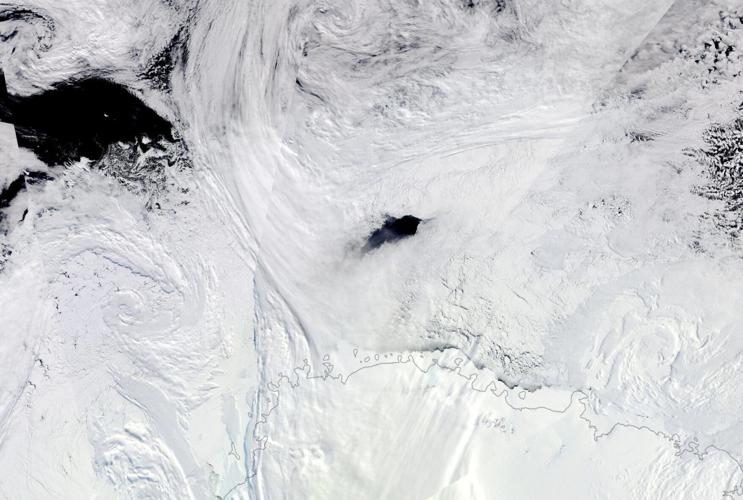Unraveling the Mystery of Antarctica’s Maud Rise Polynya
After decades of puzzling scientists, the cause behind the recurring hole in Antarctica’s sea ice, known as the Maud Rise polynya, has finally been unveiled.
Decades of Mystery
Since its first sighting in 1974 and 1976 in the Weddell Sea, the Maud Rise polynya has intermittently opened and closed, leaving researchers perplexed about its formation conditions.
Breakthrough Discovery
In 2016 and 2017, the polynya expanded to an unprecedented size, offering scientists a closer examination of its mechanisms. Lead author Aditya Narayanan explained that these years marked the first extensive and prolonged polynya occurrence since the 1970s.
Unveiling the Process
Through comprehensive data analysis, including satellite imagery and marine observations, researchers identified the crucial role of the Weddell Gyre, a circular ocean current, in shaping the polynya’s behavior. Stronger currents during 2016 and 2017 facilitated the transport of salt and heat toward the surface, triggering the formation and persistence of the polynya.
Implications for Climate Change
Understanding the dynamics of the Maud Rise polynya has significant implications for climate research. As climate change intensifies Antarctic winds, more polynyas may emerge, impacting global ocean circulation and climate regulation.
Broader Impact
The polynya’s influence extends beyond Antarctica, affecting ocean currents and heat distribution worldwide. Its presence alters water movements and can influence climate patterns across the planet.
Conclusion
Unraveling the mysteries of the Maud Rise polynya provides valuable insights into Antarctica’s role in global climate systems and underscores the urgency of studying and addressing climate change’s far-reaching impacts.















































